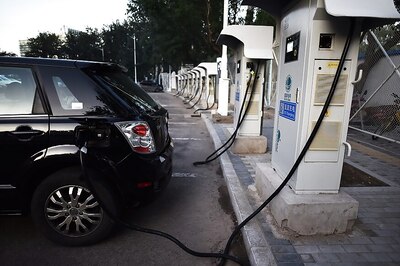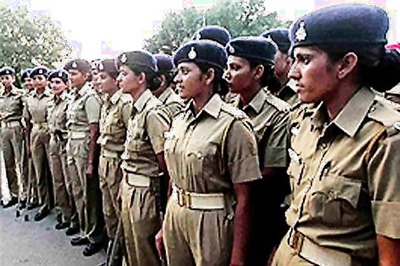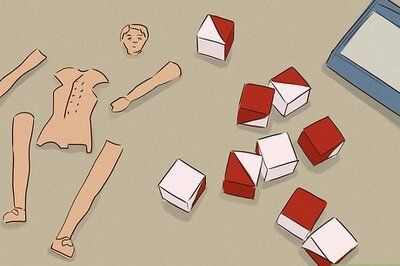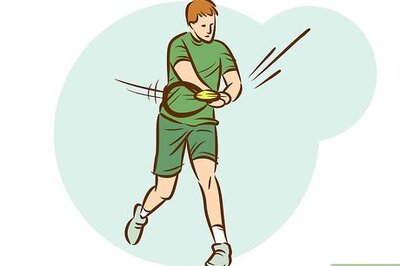
views
What does “Safe travels” mean?
“Safe travels” is an expression wishing someone good fortune on a trip. “Safe travels” conveys the hope that someone will have a safe, smooth journey and enjoy their travels without running into any difficulties. It also expresses the hope they’ll get back home safe and sound. It’s a common platitude used to show someone you care about them and wish them the best in their travels. “Safe travels” is a truncated way of saying, “I wish you safe travels” (or a similar phrase). It doesn't depend on a specific type of travel (airplane, car, train, and so on), just the length of the trip. Though its exact roots are unclear, “safe travels” also has a historical context since travel used to come with many more risks. Although travel has become significantly safer over the years, the practice of wishing someone well on their journey has remained—which is why “safe travels” is such a popular saying!
Is “Safe travels” or “Safe travel” correct?
Both are grammatically correct, but “Safe travels” is more common. You can use either version of the phrase when in doubt, but they convey slightly different messages. “Travels” implies an extended journey, likely with multiple stages or destinations all in the same trip. “Safe travel,” on the other hand, encompasses any and all travel someone might undertake on their trip. “Safe travels” uses the countable form of the noun, while “safe travel” uses its uncountable form. “Safe travels” is much more popular and the version you’re more likely to hear. “Safe travel,” while correct, is rarely used. Instead of “safe travel,” you may hear an alternate phrase like “travel safe.”
When to Say “Safe Travels”
Wish someone “safe travels” before a longer trip or vacation. For example, you might say “safe travels” to someone getting ready for an international trip, a cross-country drive, or a multi-city tour. If a person is likely to go through multiple legs of their journey, or they’re going on a trip that isn’t routine, “safe travels” is an easy way to wish them well for the entire adventure. On the other hand, “safe travels” isn’t usually used for short, routine trips. For example, you wouldn’t say “safe travels” to someone commuting to work or running a few errands. Phrases like “drive safely” or “have a good ride” work better for those situations.
Other Ways to Say “Safe Travels”
Use different phrases depending on context (or to switch it up). Some phrases mean basically the same thing as “safe travels,” while others have slightly different implications—or may work better depending on the situation. So, check out a few different ways to wish someone a safe trip; if nothing else, you may want to avoid being repetitive by saying “safe travels” every time! Travel safely. This phrase is very similar to “safe travels,” as both wish someone safety on their journey. Have a safe trip. Like the phrase above, this is nearly identical to “safe travels” in terms of its meaning. Have a safe journey. This phrase has the same meaning as “Have a safe trip” and “Travel safely.” Have a great trip. This phrase leans away from the safety angle and instead focuses on wishing someone a positive experience on their trip. Enjoy your vacation! This phrase applies specifically to someone going on a vacation (for leisure rather than any other reason). Drive safe. This is a phrase you might use for a road trip or shorter journey that specifically includes driving. Have a safe flight. This phrase is specific to someone traveling by airplane, wishing them a safe trip to their destination. Bon voyage! This is French for “have a good trip,” but it’s become a popular expression for many English-speaking people, too.
Travel Safety Advice
Research your destination beforehand. Get to know the place (or places) you’ll be visiting, including the safest neighborhoods and places to stay. Make sure you’re also staying on top of current events at your destination, including anything that might affect your travel. Once you’ve done your research and made a travel itinerary, make sure somebody else knows about it too! For example, give at least one other person who isn’t traveling with you a copy of your itinerary. That way, they can keep track of you and even do a little research on your destination too.
Update your friends and family regularly. While it’s important to make sure your family and friends know your itinerary, it’s just as important to check in so they know everything is going as planned. Let them know you plan to check in regularly; you could even pick times or dates to do so. That way, they’ll know where you’re supposed to be and that you’re safe.
Ensure your hotel room is as safe as possible. A good hotel room should have a lock and deadbolt. Keep your door locked and deadbolted while you’re inside, and keep your windows shut. When you leave your room, try hanging a “Do not disturb” sign on your door and keep the blinds on your windows closed to make it look like someone is still inside. You could invest in a portable door stopper—a tool that slips under the door to prevent it from being opened. If a friend or loved one is going to be traveling, you could also recommend they get one (to ensure “safe travels.”)
Make copies of any important documents. If something happens to one of your documents—like a passport, driver’s license, or any other form of identification—it’s always a good idea to have a copy as backup. Scan any documents you might need before a trip; save copies on your computer or a similar device and print a few hard copies out, too. It may also be a good idea to give a friend or family member a copy of your documents, too. That way, they can send the copies to you (or a local embassy) if anything happens.
Come up with a plan in case anything goes wrong. While most travel is completely safe, having a plan in place can be reassuring so you’ll know what to do in a pinch. What are the potential safety hazards at your destination? Do you know who to call in an emergency? For example, figure out what to do if your passport or wallet goes missing or a few different ways to get to the airport or your hotel. Try packing a safety bag with items such as a door stopper, first aid kit, sunscreen, and other essentials specific to your trip.



















Comments
0 comment